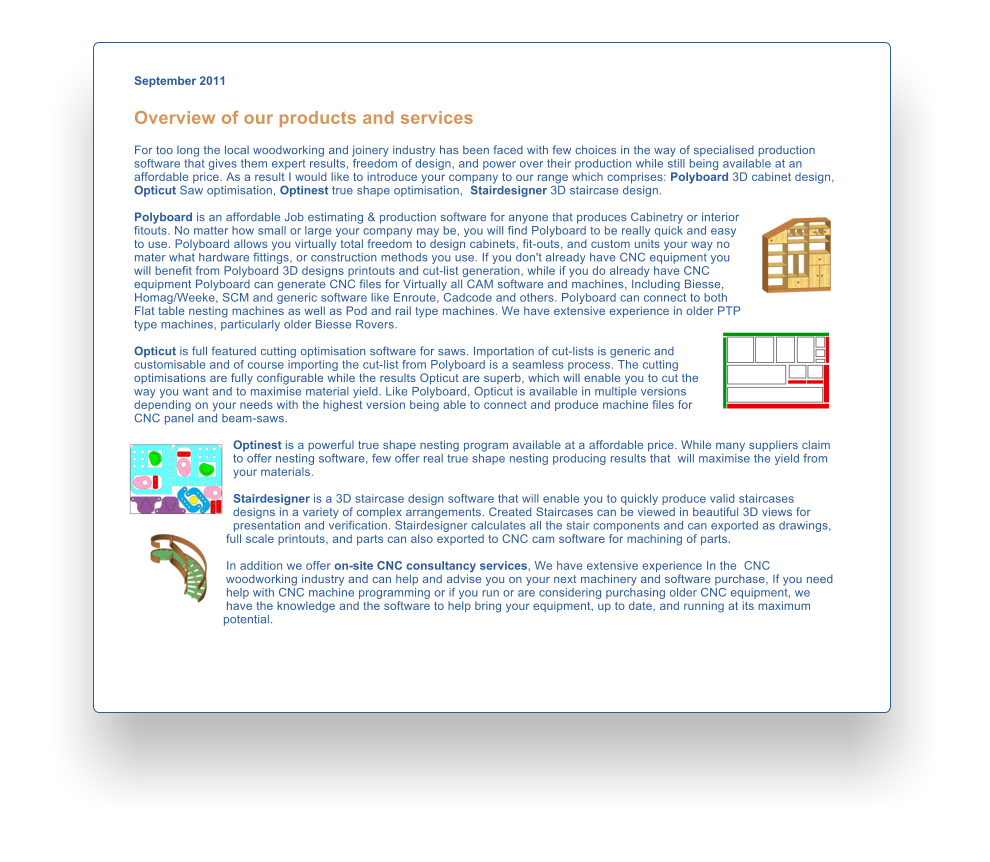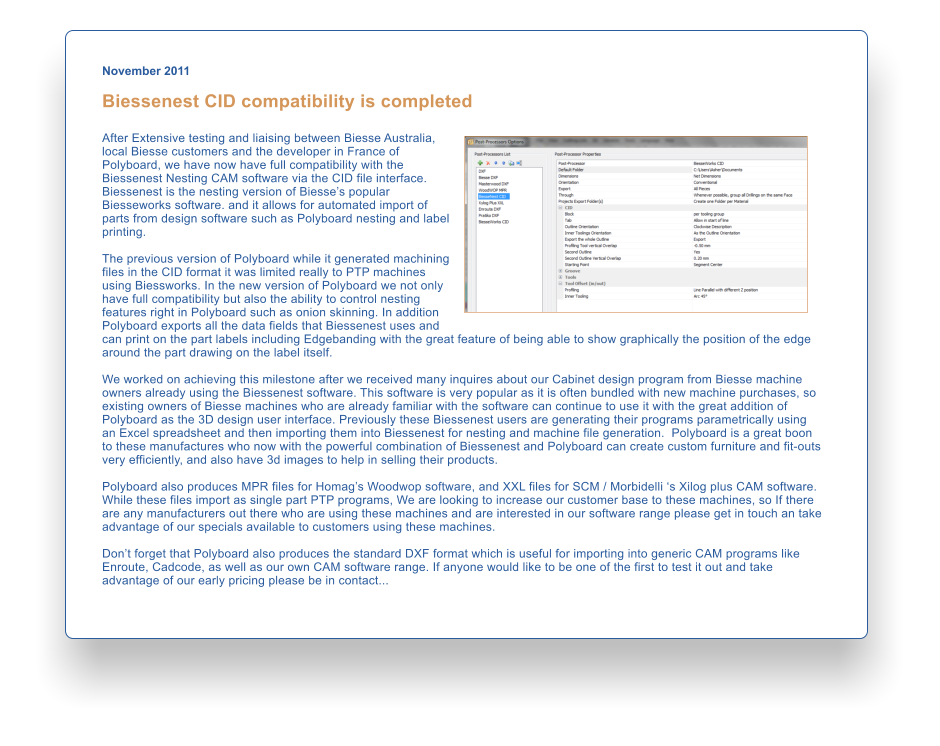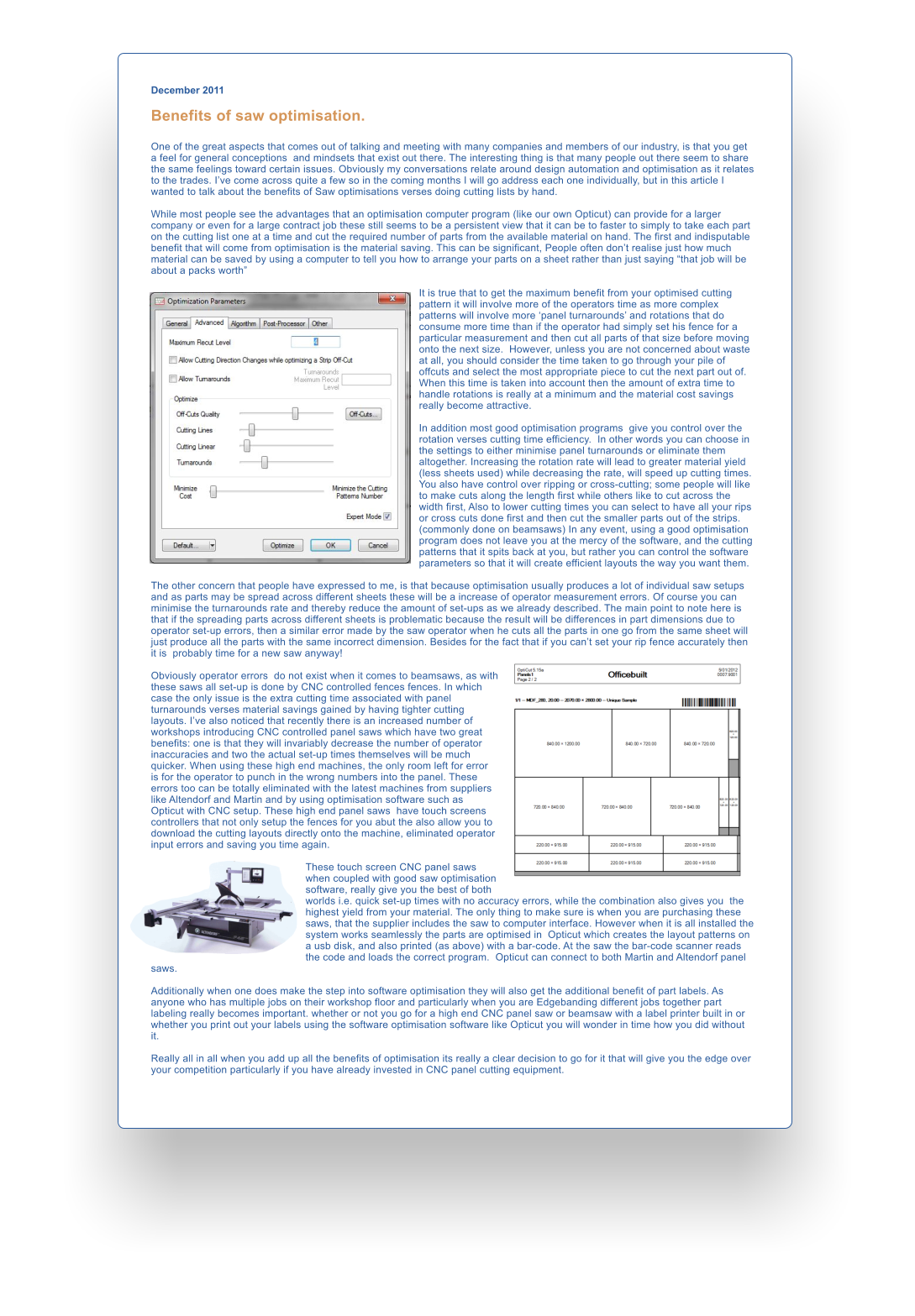










Contact Us: 0411 969 437

Officebuilt Software News Blog
News, Opinions and Helpful tips from our software experiences


Send us your feedback!
Please use the form below to let us know what you thought of
these articles. We aim to include more varied topics so if you
could suggest ideas it would be great to hear from you.



BLOG | Newsletters | FAQ | Testimonials | Videos | Polyboard | Optinest | Opticut | Wardrobes | Kitchens | Office fitouts | Contact







